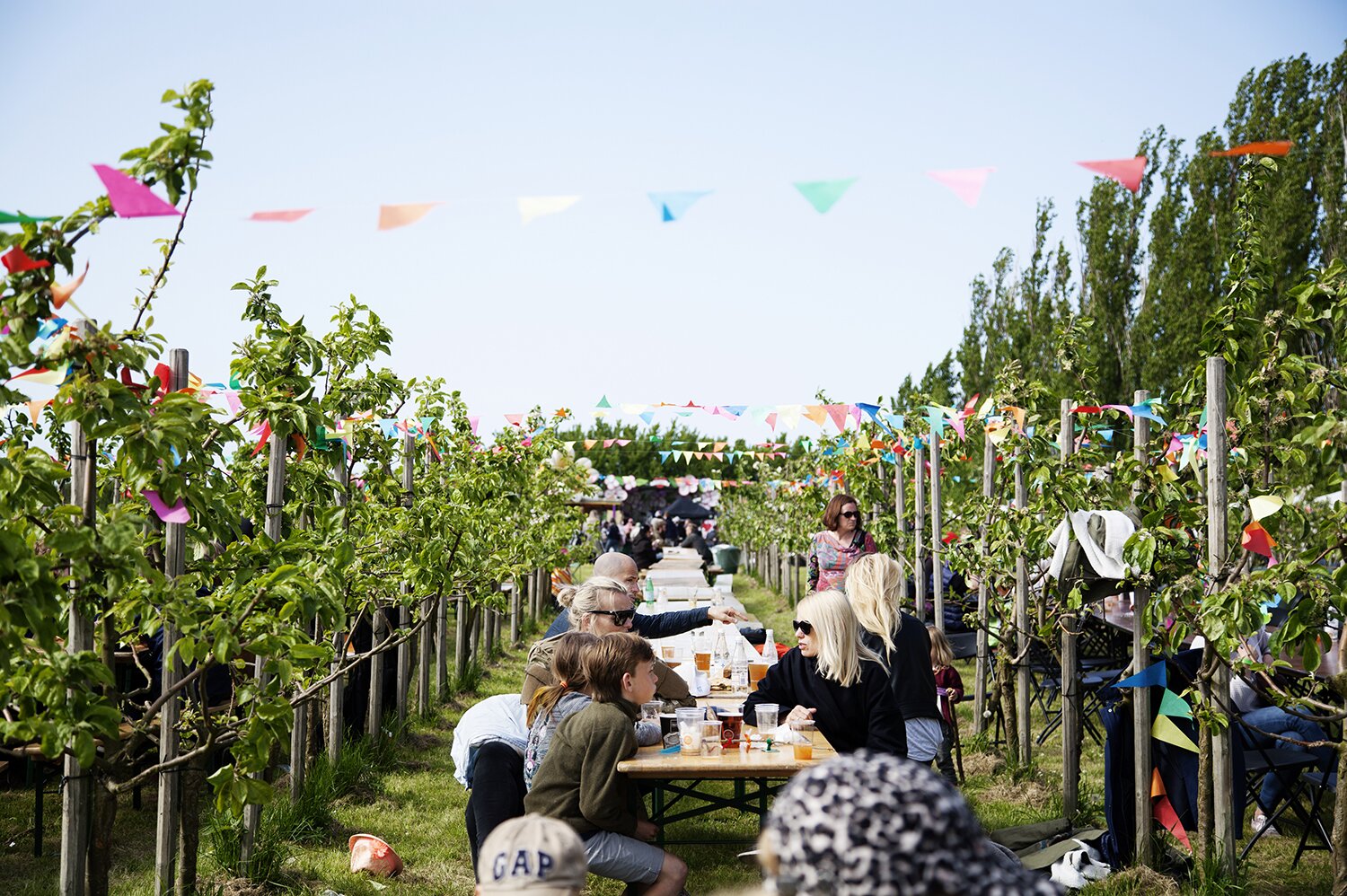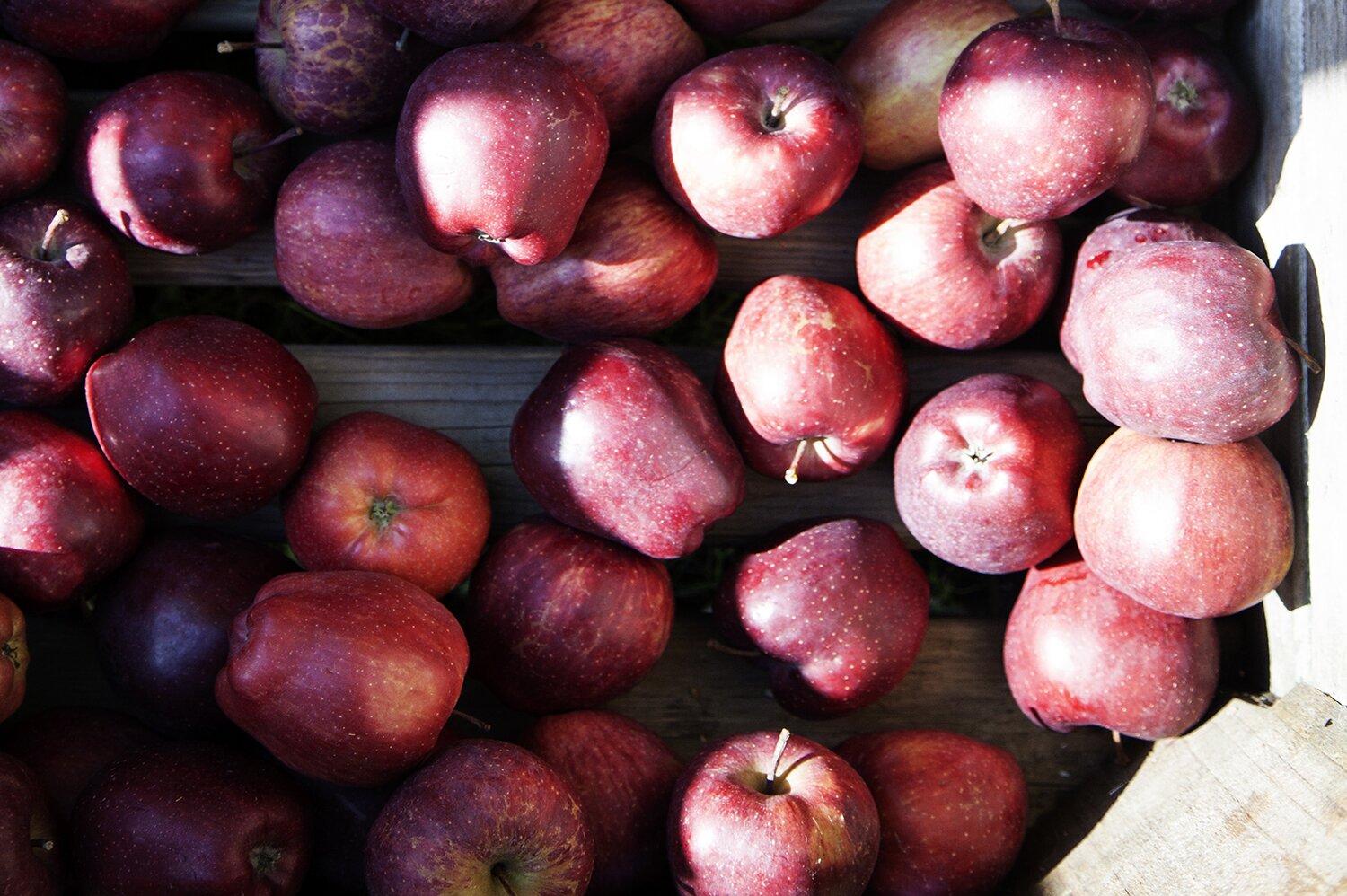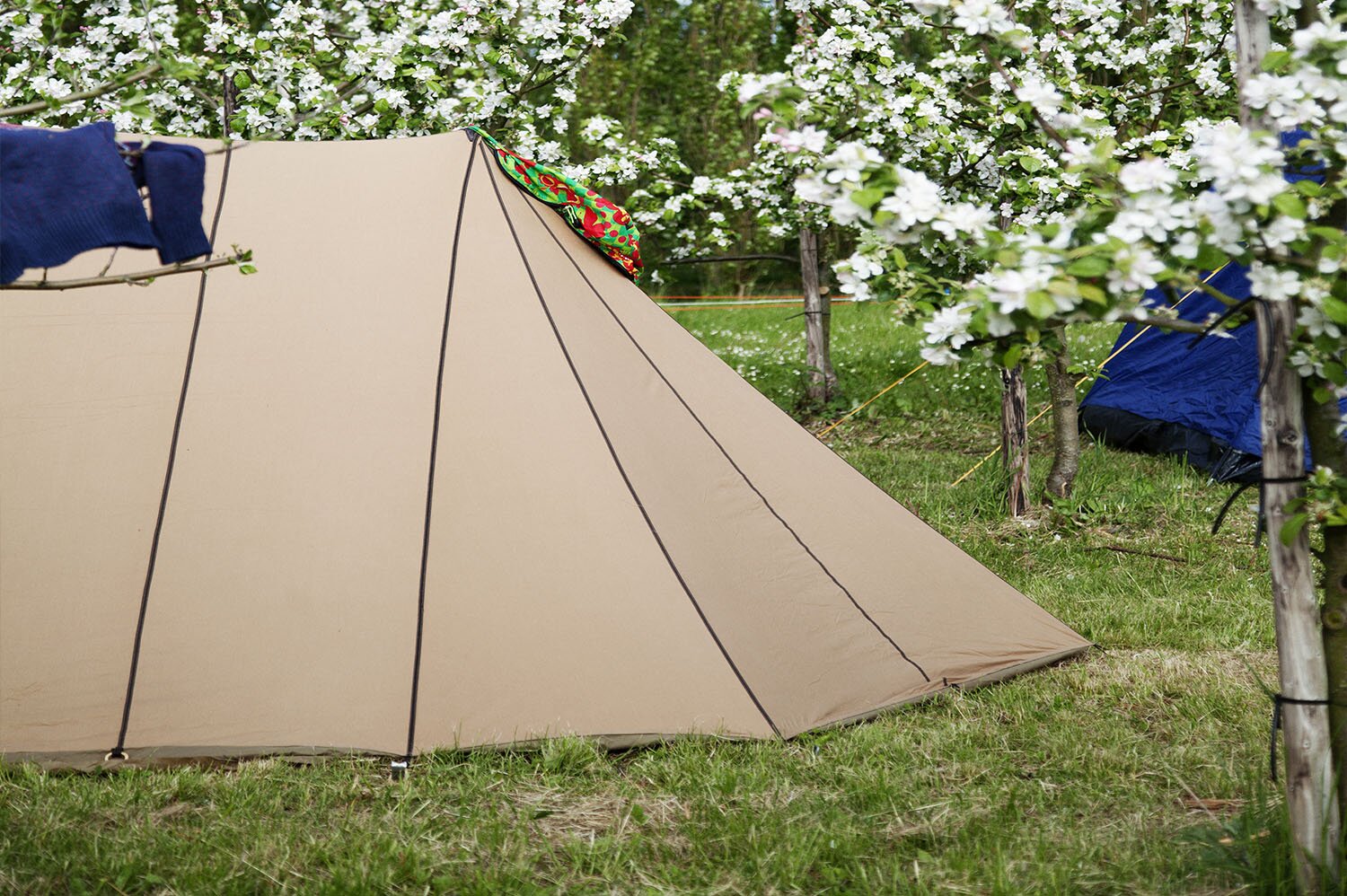From afar it is hard to say if the crowd dancing in front of the stage is so transfixed by the music that they cannot help sim- ply gathering in brotherly love, or if they have come together by a basic human instinct to survive the cold. It is 3am on the island of Lilleø. Tapping their feet in unison, like the emperor penguins in the 2006 computer animated movie Happy Feet, the crowd moves as one while the DJ plays another tune. Despite the cold, some will be at it until the break of dawn; others will retreat to the warmth of their sleeping bags in nearby tents. I, for one, capitulate. I really like the music. Also, I cannot feel my feet.
You have to be either a lunatic or an optimist to host an open-air festival in Denmark in early May. The two men behind the Apple Flower Festival are probably both. Claus Meyer is Denmark’s most prominent food celebrity, the man who launched Noma along with chef René Redzepi, the Copenhagen restaurant that would redefine Nordic cuisine. His empire includes bakeries, delis, the restaurants Radio and Namnam, and a vast chain of corporate canteens. His name is ubiquitous, with Meyer labels on flour, coffee, jams, juices, beer, and wine. Kenneth Bager, on the other hand, is a celebrated DJ, music producer, and record label owner who has been ranked in the Top 100 of the world’s best DJs by DJ Magazine. He is also famous for staging Coma Club, a legendary club venue in Danish nightlife. In recent years the two entrepreneurs have found a common ground in the middle of nowhere, merging one’s love of food with the other’s love of music. In their defence, they have no real saying in the timing of the festival: as the name implies, it celebrates the blooming of the apple trees on the island of Lilleø. This happens to be in early May.
Lilleø – literally Small Island in Danish – lies in the Smålandsfarvan- det, a body of water some 60 kilometres southwest of Copenhagen that connects the great strait of Storebælt in the west with Guldborgsund in the east. The island is flat as a pancake, making the surrounding waters reflect the light in all its glory. Arrive here on a sunny May afternoon, and it is like cruising a landscape by J.M.W. Turner, the master of British watercolour paintings. True to its name, Lilleø covers a mere 0,86 square kilometre and has a population of only 15 residents. Getting here usually means hopping aboard a ferry that takes 30 minutes from the mainland. Not this day, however. On the opening day of the two-day festival, the ferry suffers a mechanical breakdown, jeopardising the whole operation. The organizers are left with the conundrum of getting almost a thousand people to Lilleø in time for the opening concert at 4pm. The solution is nothing if not spectacular: all black Zodiac dinghies, the kind used by special forces in military operations, are deployed to get people across. Indeed, we all get there, and we get there fast. The Zodiacs tear up the strait, skimming the surface and sending the local bird population of pheasants, swans, ducks, and shorebirds off in all directions. It is like being in a rollercoaster with no seat belt and a stupendous view. I wish all festivals started like this.
On the island the orchards are instantly recognizable: thousands of apple trees fringe the main road in rows that resemble vineyards. These are the trees, some more than 30 years old, which made Claus Meyer take an interest in Lilleø in the first place. As he tells me later, if you want to make the world’s best apple cider vinegar, you have to know where your apples come from, just like a winemaker knows his grapes. He purchased the farm Vigmosegaard in 2003, which pro- duces fine apples and moonlights as festival HQ.


